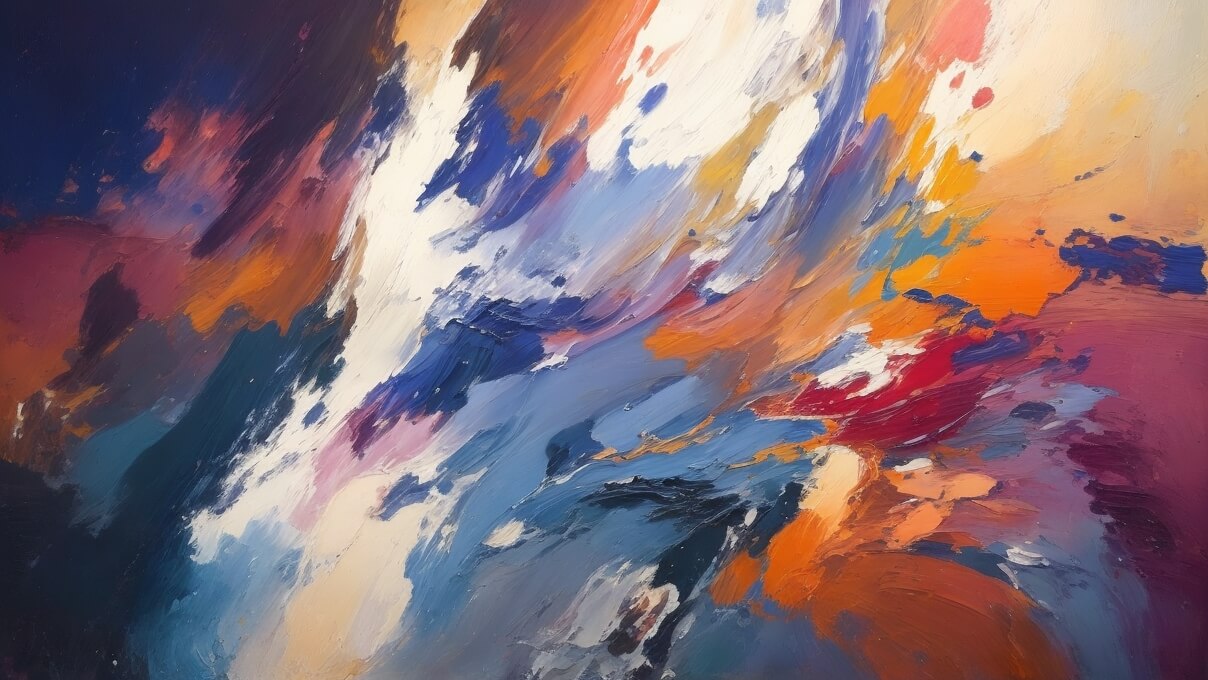Brushstrokes of Genius: Exploring the Artistry of Visual Techniques

In the hallowed world of visual art, where canvases transform into portals to the imagination, every brushstroke is a language, every texture is an emotion, and every medium is a vessel of expression. The history of art is a rich tapestry woven with the techniques and methods artists have employed to convey their vision to the world.
The Impressionists, with their daring use of vibrant colors and rapid, visible brushwork, transported viewers to sunlit gardens and bustling city streets. Monet's "Water Lilies" and Renoir's "Dance at Le Moulin de la Galette" exemplify this revolutionary style. The play of light on water, the flickering of sun-dappled leaves, and the fleeting moments of joy captured on canvas spoke of life's fleeting beauty.
Contrast this with the Realists, who meticulously rendered every detail, bringing ordinary life to the forefront of the canvas. Gustave Courbet's "The Stone Breakers" and Jean-François Millet's "The Gleaners" reflect their dedication to capturing reality. Each fold in a laborer's clothing, every crease in weathered hands, and the ruggedness of toil painted a vivid portrait of the human condition.
Moving into the 20th century, artists like Jackson Pollock and Willem de Kooning ushered in the era of Abstract Expressionism. Their gestural and intuitive approaches resulted in works like Pollock's "Autumn Rhythm" and de Kooning's "Woman I," which pushed the boundaries of what art could be. Pollock's splattered canvases were a whirlwind of energy, a dance of chaos and control captured in paint.
And what about the surrealist Salvador Dalí? His "Persistence of Memory" with its melting clocks challenges our perception of time and reality itself. Dalí's meticulous rendering of surreal landscapes and distorted objects left viewers in a dreamlike trance, pondering the mysteries of the subconscious.
Visual techniques are the essence of artistic expression. They allow artists to communicate ideas, emotions, and narratives through their chosen medium. The blending of colors, the play of light and shadow, the texture of the surface—all these elements converge to create the visual language of art.
As we journey through the annals of art history, we discover that the mastery of technique is not merely a skill; it is a testament to the artist's unique vision. It is the revelation of their inner world, shared with the outer world through the strokes of a brush, the palette of colors, and the fusion of mediums.
In the realm of technique, there is also the fascinating exploration of the materials themselves. From the frescoes of ancient Egypt to the digital realms of today, artists have harnessed various materials to breathe life into their creations.
The Renaissance masters, with their mastery of oil painting, elevated the medium to new heights. The introduction of oil glazes allowed for a luminous depth of color, giving rise to iconic works like Leonardo da Vinci's "Mona Lisa" and Rembrandt's self-portraits. The subtle gradations of light and shadow, the delicate rendering of skin and fabric, all became possible with the evolution of technique.
The advent of photography in the 19th century was a seismic shift in the visual arts. Suddenly, artists had a new tool to capture reality with precision. Photographers like Ansel Adams and Dorothea Lange used their cameras to document the American landscape and the human condition during the Great Depression. Photography became a powerful means of storytelling, a technique that extended beyond painting.
As we explore the panorama of visual techniques, we encounter the world of printmaking. Artists like Albrecht Dürer and Francisco Goya used techniques like etching and aquatint to create intricate and haunting images. The fine lines, rich textures, and tonal variations allowed for a different kind of expression, where the process itself became integral to the art.
Then there are the groundbreaking innovations of the 20th century, where the boundaries of technique were stretched beyond recognition. The rise of digital art introduced a new frontier, where artists could create, manipulate, and reproduce their work with unprecedented ease. Visionaries like David Hockney and Yoko Ono embraced digital mediums, pushing the envelope of what was possible in the visual arts.
In the world of sculpture, artists have chiseled, molded, and shaped materials to breathe life into their visions. Michelangelo's "David" stands as a testament to the transformative power of stone, where the artist's chisel released the figure trapped within. The tactile nature of sculpture invites viewers to engage with form and texture in a tangible way.
In contemporary art, installation art has redefined how we experience space and environment. Artists like Yayoi Kusama and Olafur Eliasson craft immersive installations that transport viewers into otherworldly realms. The techniques of light, mirrors, and sound converge to create sensory experiences that transcend the traditional boundaries of art.
As we delve into the world of visual techniques, it becomes evident that art is a living, breathing entity. It evolves with each stroke, each experiment, and each innovation. Artists are the explorers of this ever-changing terrain, pushing the boundaries of technique to create new visions, challenge conventions, and shape the future of art.
The techniques we've explored here are just a glimpse into the vast universe of artistic expression. Each era, each artist, and each movement adds to the rich tapestry of visual language. It is a language that speaks across time and space, transcending borders and cultures. It is a testament to the enduring power of art to capture the human experience, one brushstroke at a time.